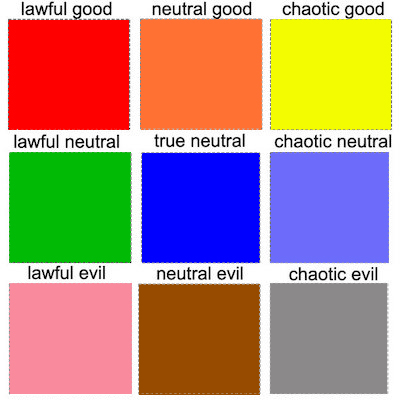Tom Flesher, Assistant Professor of Economics and JEDI Board Member
When I first got involved with the JEDI Institute, I started thinking more deeply about justice, equity, diversity and inclusion work being done at SCCC. One of the first things I heard from coworkers was, “They just want to lower standards! Those are the people who say deadlines are evil!” To be fair, abolishing deadlines seems to be very fashionable—see, e.g., Dr. Kirby Conrod’s Medium post titled “how to abolish deadlines” (capitalization in original)—but this is not actually part of the core of JEDI work. What we focus on is making sure that the academic deadlines in our course syllabi are necessary and fair. What we should oppose are deadlines that are “lawful evil.” While I’ve never been a Dungeons & Dragons player, the core idea of alignment runs through fantasy gaming. Alignment refers, roughly, to an attitude toward the world. Dungeons & Dragons uses a scale that measures two ideas: whether a character is “good” or “evil” and whether a character is “lawful” or “chaotic.” A lawful evil character is one who follows rules to an almost absurd extent in order to exploit them. So what’s a lawful evil deadline? In most cases, a hard deadline that’s arbitrarily chosen is lawful evil. For example, I teach economics. Is there really a reason a low-stakes homework assignment has to be handed in at 11:59 pm? I asked myself this about one of my courses and I realized that since I wasn’t going to be grading it overnight, I could probably be a little flexible on this. Of course, there are situations where deadlines are important. First of all, they are valuable because they provide structure for our students, many of whom need to develop educational capital so they can be successful at SCCC and at their next institution. More concrete, though, is the need to complete grading efficiently. Here’s my thought process on two different types of assignments. I run a problem-based classroom. I assign problems to students that we then work on in class. For a long time, I collected these on the learning management system, went over them in class and graded them when I got back to my office. Thinking about the purpose of these assignments, I realized I didn’t need to grade these because the class time was spent solving the problems. Students got feedback right away regardless. And since I didn’t need to grade them, I didn’t really need to collect them either. Sure, some students will skip them, but in an interactive classroom I can figure out who’s swimming and who needs a life preserver. I also assign a paper because the Ammerman social sciences and criminal justice department requires one in every class. I’ve broken this down into steps: a topic submission, a bibliography and a partial draft come in before the final paper, and a self-evaluation is required afterward. This is a series of assignments where deadlines are important because the purpose of each build-up assignment is to provide feedback to the student on how to move forward. Plus, the final draft of the paper has to come in on time so I can submit grades by the college’s deadline. I have a late policy where the student loses credit if the paper is not on time, but the key here is that the deadline exists for a reason. If you want to make your syllabus more inclusive, and save yourself some headaches, consider the purpose of your assignments and what the reason for the deadline is. You don’t need to abolish deadlines, but drop the ones that are lawful evil. |
